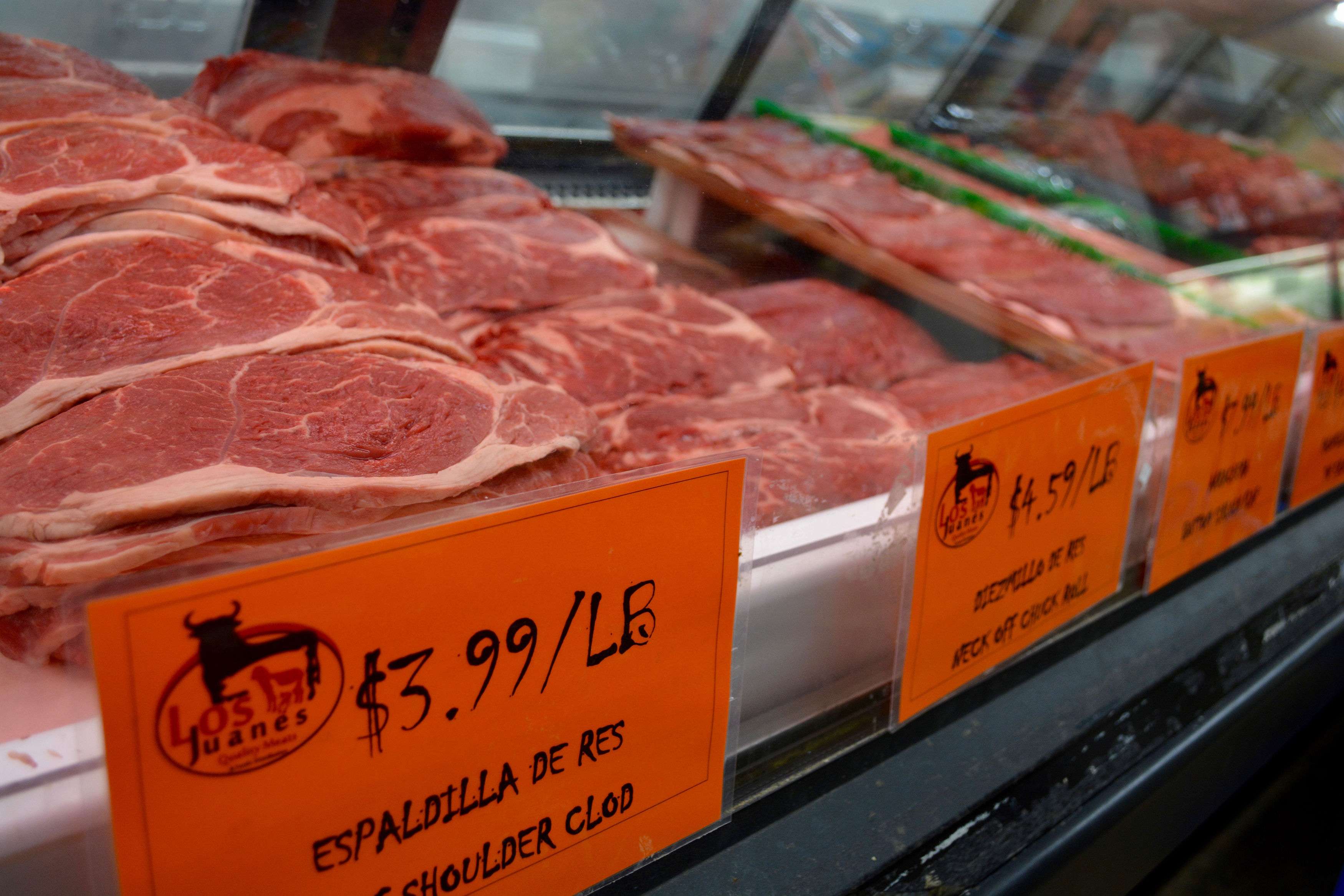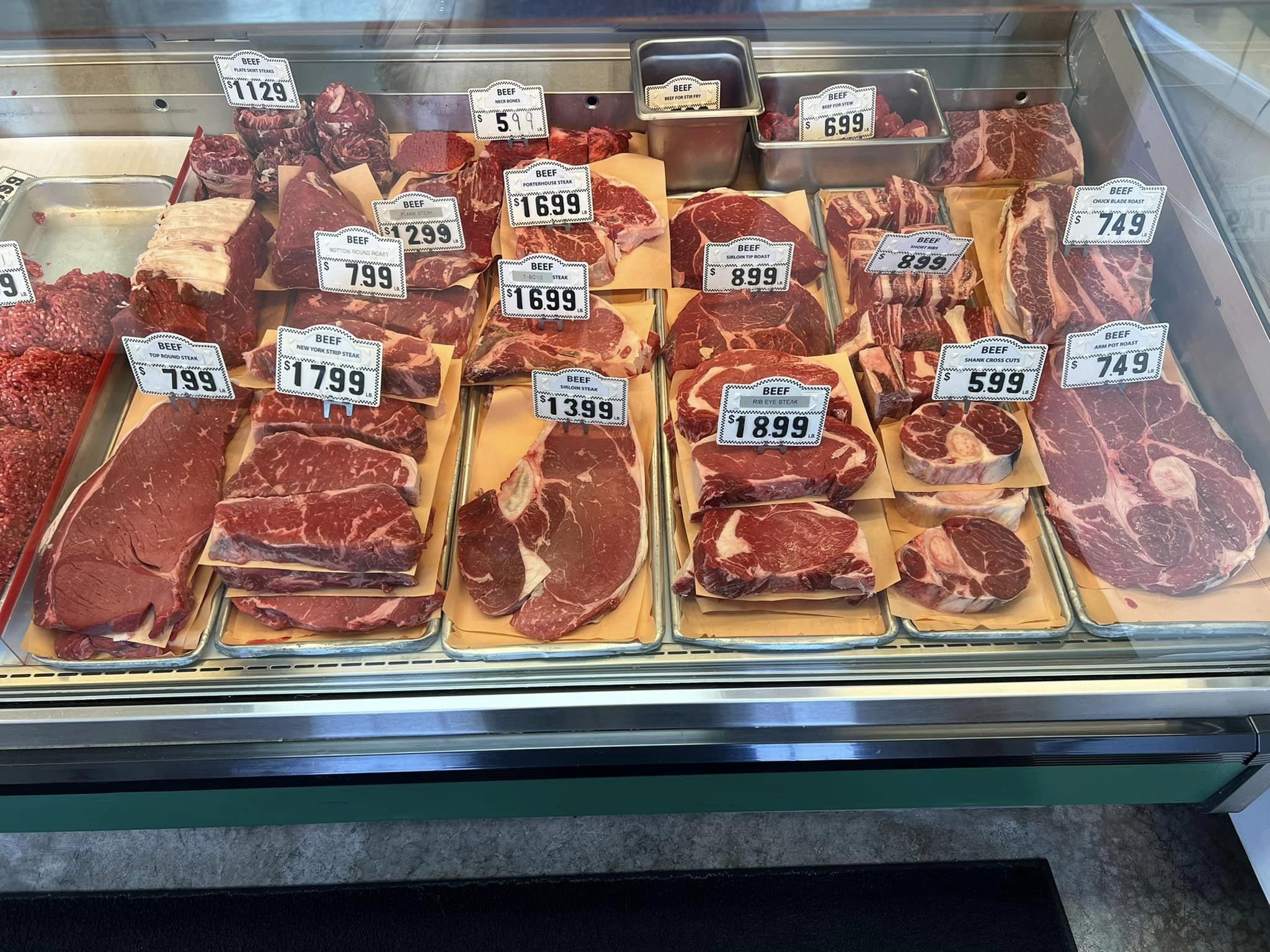Why Locals Love Bagley Farms Meat Market Edwardsville IL for Their Meat Shopping
Why Locals Love Bagley Farms Meat Market Edwardsville IL for Their Meat Shopping
Blog Article
Reveal the Art of the Butcher's Cut in a Modern Meat Market
In the ever-evolving landscape of contemporary meat markets, the butcher's cut has actually transcended its traditional origins, merging age-old craftsmanship with contemporary practices. What absolutely establishes the contemporary butcher apart is their capacity to forge a much deeper connection between customers and the beginnings of their meat.
Advancement of Butchery Methods

The mid-20th century saw butchery strategies even more refined by scientific understandings into muscle biology and meat aging, boosting both inflammation and preference. Technologies like vacuum packaging and refrigeration extended product shelf-life, permitting butchers to diversify offerings and boost quality assurance. This duration likewise marked the surge of specialized devices, such as band saws and meat slicers, which enhanced accuracy and performance in meat handling.
The 21st century has actually introduced electronic technology into the butchery realm. Computerized systems now aid in tracking pet provenance and maximizing cuts to meet certain consumer preferences. Furthermore, a rebirth in artisanal butchery has emerged, blending conventional skills with modern understanding to deal with customers looking for moral and lasting meat options. This advancement emphasizes a dynamic interaction between tradition and innovation, meeting modern demands while protecting the craft's heritage.

Recognizing Meat Cuts

Understanding the ins and outs of meat cuts is essential for both butchers and customers looking for high quality and value. Each cut comes from a different component of the pet, passing on distinct flavors, appearances, and food preparation approaches. Mastery of these differences not only improves cooking experiences however also optimizes the utility of each carcass. For butchers, specific cuts show skill and respect for the craft, making sure minimal waste and optimal return.
The main groups of meat cuts include primitive, sub-primal, and retail cuts. Primitive cuts, such as the loin, rib, and chuck, are the big sections at first divided from the carcass. Butchers after that break these down better right into sub-primal cuts, before ultimately creating retail cuts readily available to customers, like ribeye or tenderloin. Each phase calls for cautious interest to physiological structure and muscular tissue structure.
Understanding muscular tissue make-up is important; muscles utilized much more often by the pet tend to be harder and are best fit for slow food preparation techniques, while less-used muscle mass, like those located in the loin, are much more tender and ideal for cooking or roasting. Experience with these distinctions empowers customers to make informed selections, boosting their cooking ventures.
Picking Top Quality Meat
Selecting the best meat includes even more than simply selecting a visually attractive item from the display screen. The art of selecting top quality meat calls for a discerning eye and knowledge of specific characteristics that represent quality and quality.
Second of all, take into consideration the marbling, which describes the white flecks of fat within the muscular tissue. Correct marbling is a vital indication of tenderness and flavor, as it melts during food preparation, boosting the meat's juiciness. Bear in mind, higher marbling usually correlates with exceptional top quality cuts, such as USDA Prime.
Appearance is one more crucial aspect; meat needs to feel firm to the touch, not slimy or excessively soft. Additionally, be conscious of the fragrance. Fresh meat should have a tidy, neutral odor, free from any sour or repulsive odors.
Coupling Cuts With Cooking Methods
Successfully pairing cuts of meat with the appropriate cooking techniques is essential for accomplishing optimum taste and structure. Various cuts differ in inflammation, marbling, and connective tissue material, each requiring details strategies to unlock their possibility. Tender cuts like filet mignon and ribeye, with their fundamental marbling, advantage from high-heat, quick-cooking methods such as barbecuing or pan-searing. These techniques boost the meat's natural tastes and make sure a juicy coating.
On the other hand, harder cuts like brisket and chuck roast are rich in collagen, which damages down right into gelatin when prepared gradually. These cuts are ideal for braising or slow-moving roasting, enabling the meat to soften gradually and develop deep, complicated tastes. Cuts such as short ribs and pork shoulder make out well with slow-cooking techniques, where expanded cooking times change their robust structures into succulent dishes.
Lamb shanks and oxtail, which call for prolonged cooking to soften, are ideal candidates for stewing or sluggish simmering. read this article These techniques my review here coax out rich, passionate flavors while maintaining moisture. By understanding the special qualities of each cut, chefs and home chefs alike can elevate their cooking creations, ensuring each recipe is both satisfying and memorable.
The Butcher's Role Today
Navigating the advancing landscape of the modern meat market, the butcher's duty today expands beyond plain preparation of cuts. Contemporary butchers are cooking artisans, teachers, and advocates for sustainable practices.
Along with crafting specific cuts, butchers now involve directly with customers, using cooking recommendations and tailoring selections to fit individual demands and preferences. Their experience in meat aging, marbling, and flavor profiles equips consumers to make informed decisions, enhancing their cooking experiences. This tailored service exhibits the butcher's developing duty as a recommended you read trusted consultant in the kitchen.
Furthermore, butchers are crucial in decreasing waste, utilizing entire pets to develop varied products such as sausages and stocks - bagley farms meat market edwardsville il. This extensive approach not only appreciates the animal yet also aligns with contemporary sustainability goals. By doing this, the contemporary butcher symbolizes both tradition and advancement, adapting to an ever-changing market while preserving the virtuosity and stability of their craft

Conclusion
The contemporary butcher's craft delicately weaves conventional methods with contemporary technologies, emphasizing sustainable practices and honest sourcing. Proficiency in comprehending varied meat cuts and high quality indications empowers butchers to offer enlightened recommendations, lining up details cuts with ideal food preparation techniques. This proficiency not just boosts culinary experiences yet additionally reinforces the connection in between consumers and the beginnings of their food. By recognizing historical methods while accepting contemporary needs, the butcher's duty continues to be crucial in today's advanced meat market.
Report this page